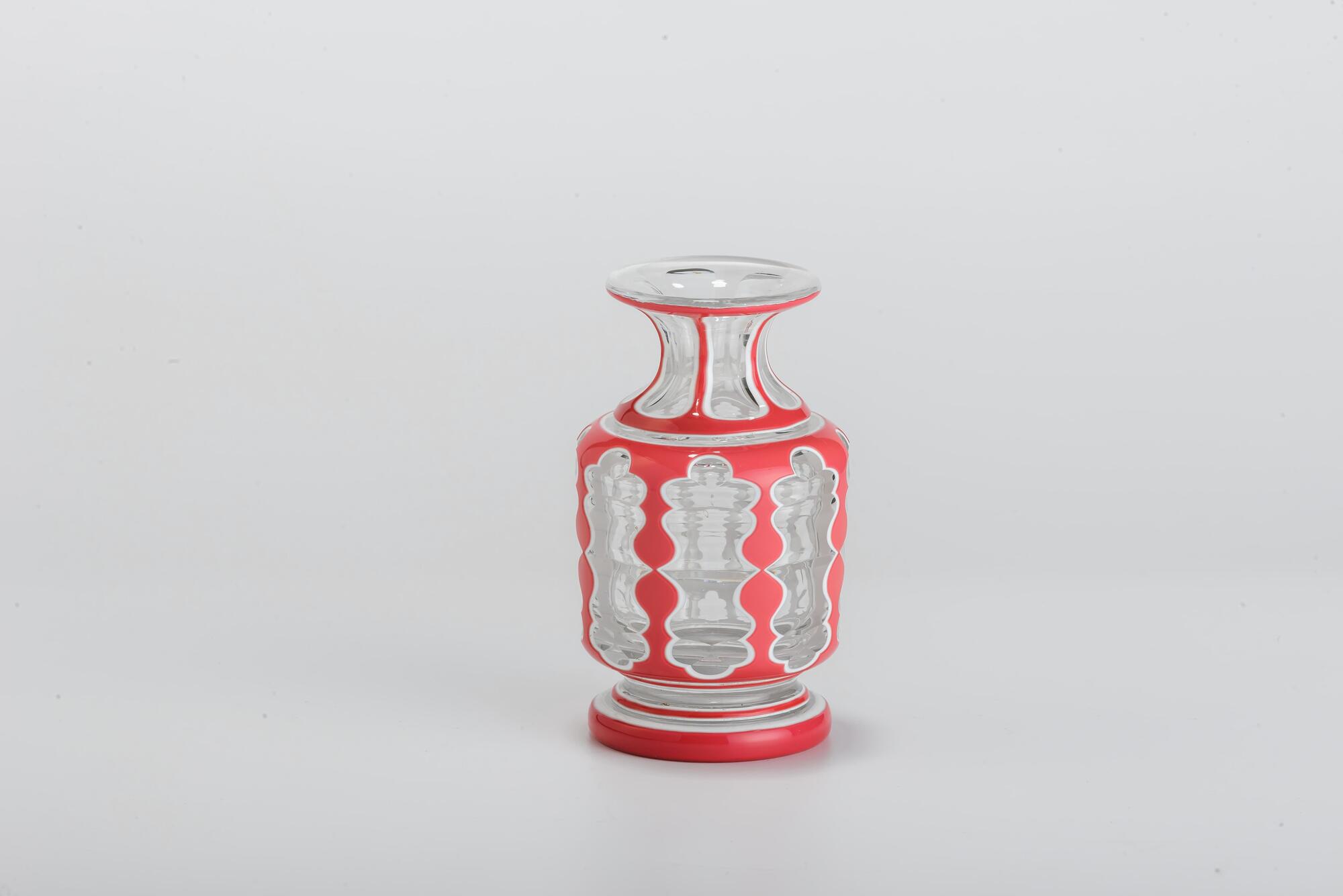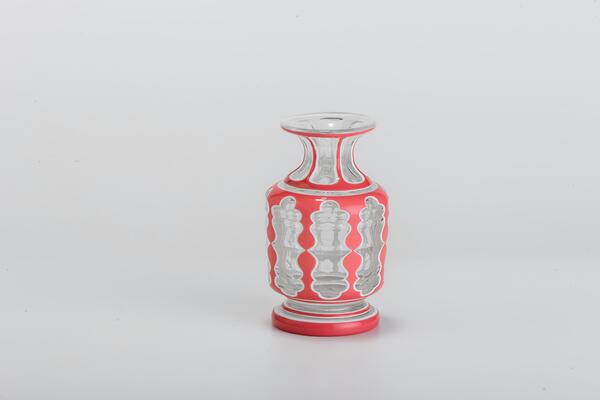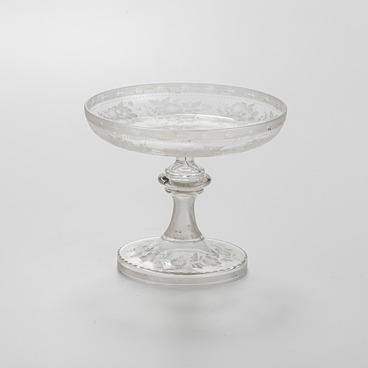During the second quarter of the 19th century, Russia and many European countries experienced a surge of interest in medieval art and neo-Gothic style. In medieval Russia, the Gothic style as such did not exist; therefore, the movement only drew the attention of the upper classes, who were quite familiar with foreign culture. Representatives of the aristocracy and Catholic communities in large cities appreciated the neo-Gothic style.
It was the example of the royal couple — Emperor Nicholas I and Empress Alexandra Feodorovna — that contributed to the spread of this fashion trend. At home, the tsar and his family were surrounded by unique objects of “historical” applied art.
In 1832, a “Gothic service” designed by Ivan Alekseevich Ivanov was made at the Imperial Glass Factory. Neo-Gothic motifs were rendered with the help of a complex cutting technique and bright glass overlays. This combination gave rise to a Gothic decor trend in the art of Russian glassmaking that was also followed at the Bakhmetevsky factory.
For more than three decades, the grinding of arches on two- and three-layer richly colored glass remained in demand. The pattern was used to decorate wine glasses, decanters, feather pen stands, mugs, and vases.
The decoration was well-suited for glassware. It enabled glassblowers to emphasize and take into account the natural properties of glass without resorting to lavish embellishment. The color scheme (primarily ruby and cobalt) and light made the products look similar to Gothic stained-glass windows.
This vase from the museum’s permanent exhibition has three layers of glass. It is painted with the expensive “gold ruby” and follows the neo-Gothic traditions. The body of the vase is ground with a vertical “gothic” cutting tool. The neck that flares upwards and downwards is decorated with wide facets. Horizontal lines were cut through to the colorless glass layer —they adorn the base of the neck, the bottom of the body and the top of the base.
In the second half of the 19th century, pan-European romantic trends were replaced by the interest in the domestic, pre-Petrine Middle Ages, the “Russian style”. Gothic patterns were abandoned.
It was the example of the royal couple — Emperor Nicholas I and Empress Alexandra Feodorovna — that contributed to the spread of this fashion trend. At home, the tsar and his family were surrounded by unique objects of “historical” applied art.
In 1832, a “Gothic service” designed by Ivan Alekseevich Ivanov was made at the Imperial Glass Factory. Neo-Gothic motifs were rendered with the help of a complex cutting technique and bright glass overlays. This combination gave rise to a Gothic decor trend in the art of Russian glassmaking that was also followed at the Bakhmetevsky factory.
For more than three decades, the grinding of arches on two- and three-layer richly colored glass remained in demand. The pattern was used to decorate wine glasses, decanters, feather pen stands, mugs, and vases.
The decoration was well-suited for glassware. It enabled glassblowers to emphasize and take into account the natural properties of glass without resorting to lavish embellishment. The color scheme (primarily ruby and cobalt) and light made the products look similar to Gothic stained-glass windows.
This vase from the museum’s permanent exhibition has three layers of glass. It is painted with the expensive “gold ruby” and follows the neo-Gothic traditions. The body of the vase is ground with a vertical “gothic” cutting tool. The neck that flares upwards and downwards is decorated with wide facets. Horizontal lines were cut through to the colorless glass layer —they adorn the base of the neck, the bottom of the body and the top of the base.
In the second half of the 19th century, pan-European romantic trends were replaced by the interest in the domestic, pre-Petrine Middle Ages, the “Russian style”. Gothic patterns were abandoned.





